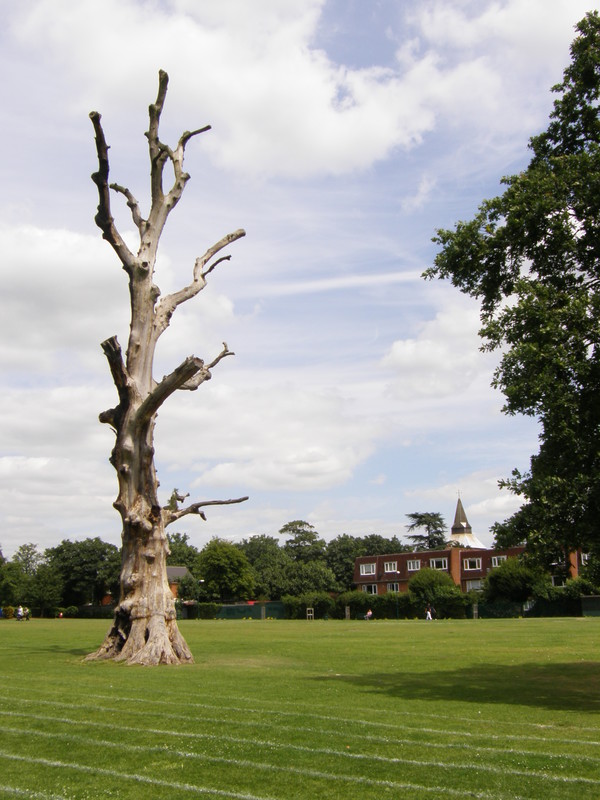
Well, I really wasn't expecting to enjoy this walk as much as I did. I mean, look at the facts. It's the Monday after a heavy weekend, and I should have a personal black cloud over my head; it's a long commute to the start of this walk from west London; it's hot and humid, and I hate hot and humid; and, most of all, the heart of this walk goes through Dagenham, and all anyone ever talks about when I mention Dagenham is the closure of the Ford factory in 2002, and they don't tend to smile as they mention it.
But it turns out that this is a great part of the world to explore on foot, especially when the sun is out, because this is zone 5 and 6, and it feels like it. The Metropolitan line equivalent is the stretch from Harrow to Moor Park or the section through Ruislip, and for walking, the two ends of the capital compare favourably... and that, I guess, is the real surprise. Perhaps west London simply has better public relations people, because I didn't see this coming at all.
Becontree to Dagenham Heathway
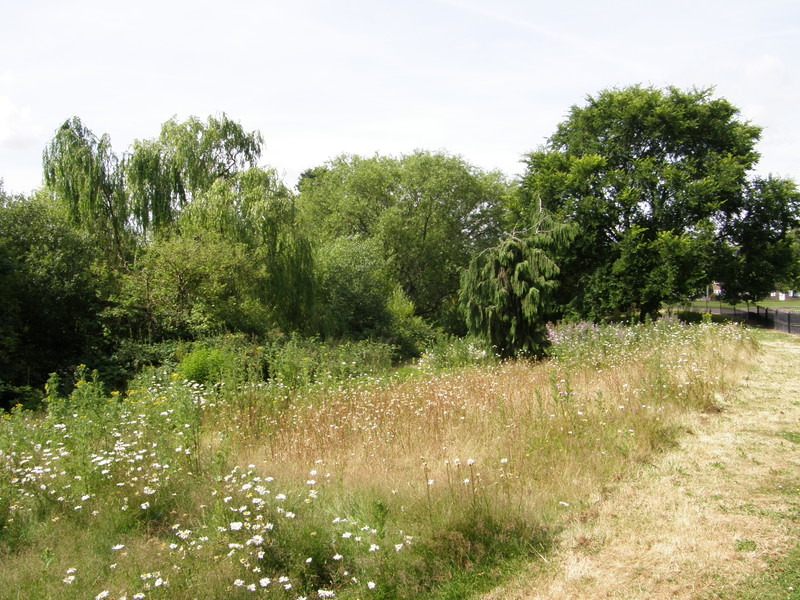
It only takes a couple of minutes to get from Becontree station to the greenery of Parsloes Park, and a pleasant park it is too. The western half of the park is planted and landscaped, with a large central pond that's all but hidden by the plush trees and bushes growing on the shore. The eastern half of the park is quite a contrast, being all football pitches and wide, open spaces.
The park's highlight isn't the greenery, though, it's the pavilion in the middle of the footy pitches. The building is a pretty nondescript brick affair, sitting squat and fairly uninspiringly in the middle of all this flat land, but walk closer and its true beauty is slowly revealed, for this pavilion is smothered in the most amazing graffiti. Graffiti is one of the perks of urban walking, even though most of it is artless rubbish, because when it's done well, it's astounding. The Greenway has some good graffiti, as does the Parkway Walk near Finsbury, and I can now add the pavilion in Parsloes Park to the list.
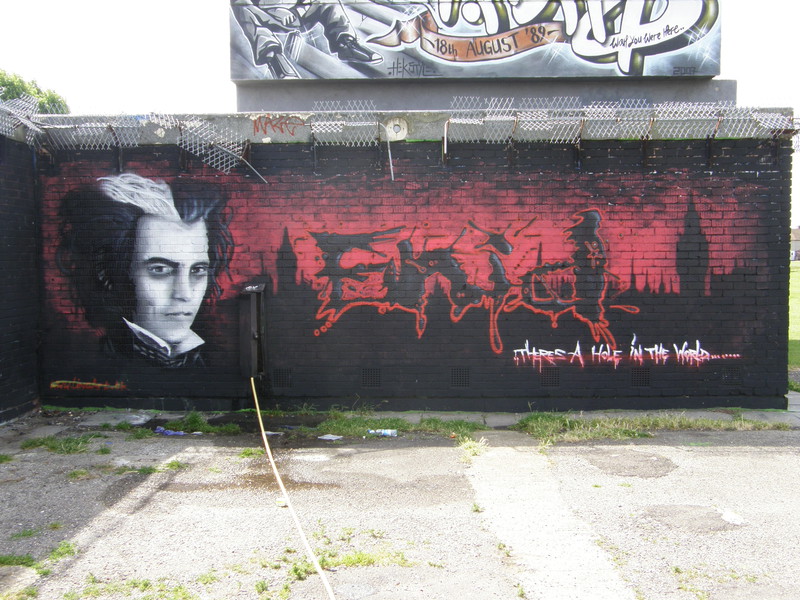
After the end of the park, it's a short stretch of suburbia all the way to Dagenham Heathway station, which is tucked away between shops in the bustling main drag of Dagenham. As I walked along the street, admiring the shops and wondering whether to get a can of something cold to hold against my forehead, it struck me that, for the first time since the centre of town, most of the people were white. The shops were back to normal after the excitement of Tower Hamlets and Newham, and although the last crowded place I visited, Barking, wasn't quite as ethnic as, say, Upton Park, there was still a heady cultural mix in the market. Dagenham on a Monday morning is most definitely white, and it's the same all the way to the end of the line.
Dagenham Heathway to Dagenham East

From Dagenham Heathway to Dagenham East, the most direct route is almost exclusively along suburban backstreets, and it's not at all unpleasant. The houses are mainly terraced pebbledash affairs, but even though they might not be the most attractive suburbs in the world, they're clean and lived in, and a long way from the image of closed factories that might spring to mind when you think of Dagenham.
Dagenham East station is another Identi-Kit District line station, and really isn't worth dwelling on. Like most of the stations along this section of the District line, the station building is a low brick block on the crest of a bridge over the line, with stairs leading west down to the line. If there's one big difference between west and east, this is it; even the most box-like of Holden's west London designs are more inspiring than the eastern stations...
Dagenham East to Elm Park
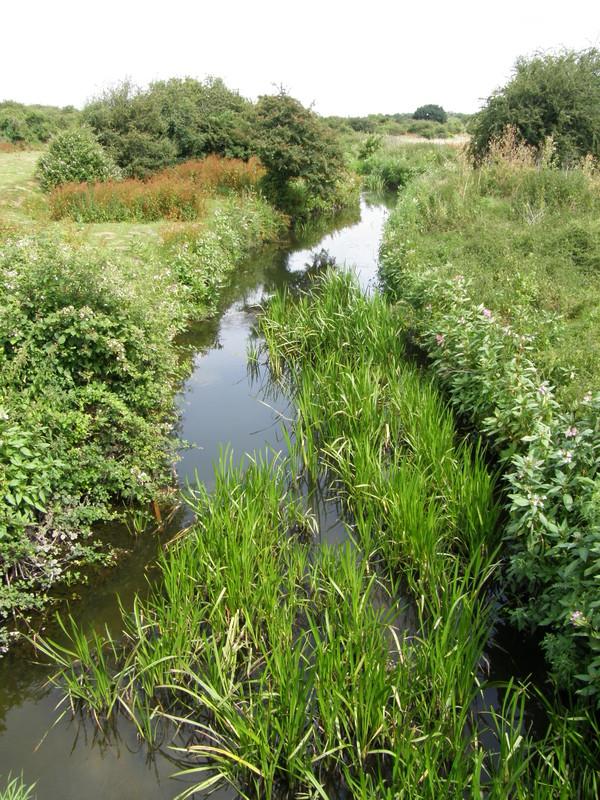
I love the way that urban walking forces complete opposites to rub shoulders; it's like a suburban version of the Tube itself, where different classes, ages and cultures have to share the most intimate spaces without complaint. When walking through London, sometimes you cross a road and find yourself switching from the poshest of the posh to the poorest of the poor, and sometimes you can find the most exquisite beauty buried deep in an unrelenting urban sprawl, but this section contains one of the clearest contradictions I've seen for a while.
Just north of the station, a small path leads behind some shops to Foxlands Lane, which winds its way past some extremely well-fortified fencing on the right and playing fields on the left. And then, after a few minutes, the path bursts out into the Chase Nature Reserve, a lovely patch of real countryside, and you turn around to find that behind all that security camera fencing lies a huge chemical works, belting out products for the pharmaceutical industry. It's an interesting juxtaposition, the chemical plant's chimneys making an intriguing backdrop to the nature reserve's wild fields.
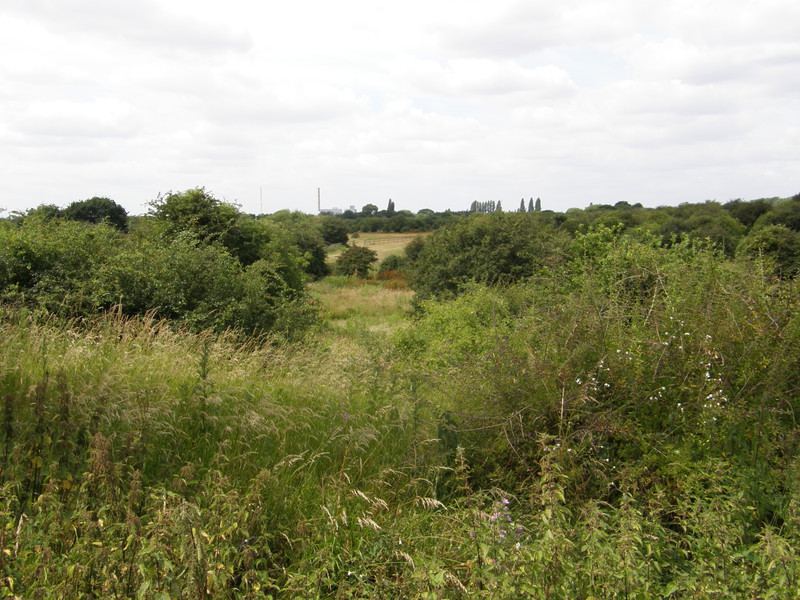
Actually, as large industrial complexes go, the Sanofi-Aventis factory is pretty unintrusive; indeed, it goes to great pains to make sure you don't even see it, with its thick fencing and serious security doors along Foxlands Lane. And even if it was a smoke-belching satanic mill – which it doesn't appear to be – the nature reserve is big enough and wild enough to get away from it all, with the Beam River running through the eastern reaches, horses munching away on grass to the north, and plenty of rugged bushes and trees to hide behind. It's a real treat, and heralds our arrival into zone 6 with an appropriate air of rural beauty.
Elm Park station is the other side of some enjoyable suburbia. The standard of housing slowly improves along this section, morphing from terraces to semi-detached, and although the architecture is still rather monotonous – there's little variety between homes, and most are simple boxes with roofs, not unlike a primary school version of the suburbs – there's clearly a lot of house-proud residents round here, and their flare for keeping neat and attractive front yards and gardens is evident. I appreciated it, anyway.
Elm Park to Hornchurch

Elm Park turned out to be a little gem. Not only is the station along a lovely little high street, with lots of shops, a large pub (called The Elm Park) on the main roundabout, and a distinct lack of traffic, but just north of the main drag is another green space, Harrow Lodge Park. The River Ravensbourne flows through the park (though it's really just a stream at this point), and it feeds into a long lake with a bridge over the middle section from where you can see more Canada geese and swans than you can count.
This is clearly a place for picnics on the grass, because I only spotted one bench in the entire park, but in weather like this, lunching on the grass is the best option anyway (though there is a park café if you're feeling particularly luxurious). If you live in south or west London, then you'll notice that the skies are relatively peaceful round here, with the planes flying much higher than those approaching Heathrow or Gatwick. It makes it that much easier to doze off...

East of the park, while heading into Hornchurch, the housing takes a further turn for the better. Semi-detached is the norm, though there are some attractive sets of terraces, though the larger number of bungalows gives Hornchurch a slight air of retirement village. That's all blown out of the water by the huge pub on Station Lane, the Railway Hotel, which must be able to serve the entire district in one go without breaking a sweat; it's certainly a welcome stopping point before the last stretch to Upminster, as Hornchurch station – another building from the London, Tilbury and Southend Railway's standard mould – is just along the main road, past an attractive line of shops.
Hornchurch to Upminster Bridge

The most direct route from Hornchurch to Upminster Bridge would take you along yet more suburban backstreets, but there's a much more rewarding option to be enjoyed if you head south to join the London Loop for a stretch. The River Ingrebourne is a 27-mile tributary of the Thames that flows from Brentwood in Essex down to Rainham on the Thames, and the London Loop follows it for some of day 14 and most of day 15. I decided to follow the Ingrebourne north, joining the Loop south of Hornchurch station, at the eastern end of Hacton Drive, and it turned out to be a good move.
When I walked the Loop back in 2003, I didn't rate this section very highly, but then I did walk it on a grey day in December, and with it being the last day of the Loop, I had high expectations. On a sunny day in June, though, the Ingrebourne is a very pleasant companion, and the path that winds alongside the stream is so easy to follow that you can slip into a bit of a daze as you wind between the houses of Hornchurch and into Upminster.

Upminster Bridge station is on the main road, which can be reached by walking around Hornchurch Stadium, home to the non-league football side AFC Hornchurch. There are a few shops to keep the station company, and the Bridge pub (which could do with a paint job), but at least the station has a notable architectural feature, that of the polygonal ticket hall, which echoes the station at South Ealing, though without the attractive glass windows. The floor tiles inside the station also sport a reverse swastika, which was less controversial when the station was opened in 1934 than it would be now, and the station is distinctive for being the least-used station on the whole of the District line. After such a run of forgettable stations, this is really quite an achievement...
Upminster Bridge to Upminster
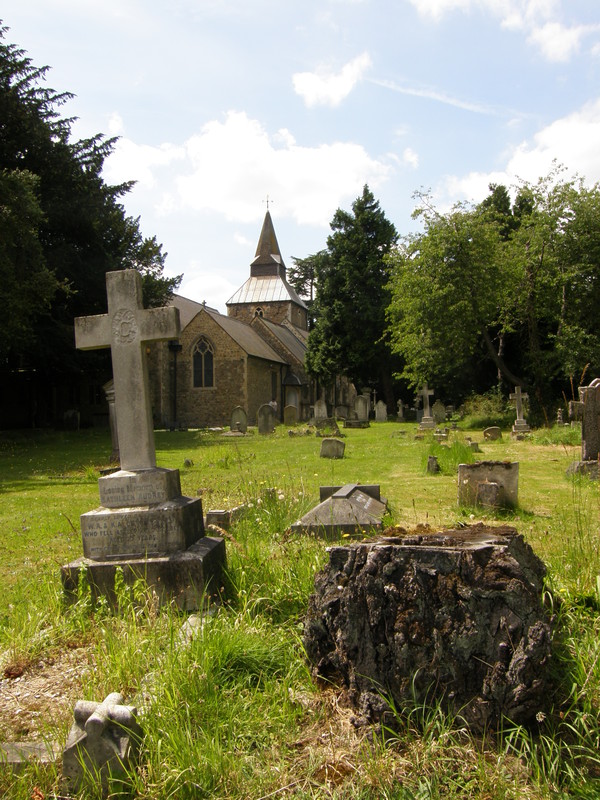
The lack of interest in Upminster Bridge might be partly because Upminster station is not far away. Backtracking past the stadium along St Mary's Lane, it's worth visiting the Grade II* listed Upminster Windmill to the north of the road; this octagonal smock mill is currently being refurbished, with the hope that it will become the only working windmill in Greater London. It currently only has one sail in place, as the other was damaged in , so it does look a little odd, but it's still worth the short detour.
A little further on, to the south, is the pleasant town-centre space of Upminster Park, which combines a park, tennis courts and a welcome ice-cream hut into one enjoyable package. The centre of Upminster is just north of the park, with shops and St Laurence's Church clustered around a central traffic junction, and a little further on is Upminster station itself, the eastern terminus of the District line. The front of the station is completely modern, but tucked round the side along Station Approach is the original Victorian ticket hall, dating from when the station was opened in 1885 as part of the London, Tilbury and Southend Railway.
So I've now crossed London from west to east, and have just one more day to go before the District line is in the bag. I didn't expect it to be a highlight, but the eastern section of the District has been a delight, and it's a bit of a shame that east London is so poorly served by Tube lines, as only the Central line gets this far out in this part of the world. Perhaps I'll have to walk the DLR at some stage; this is an interesting part of the world, after all.